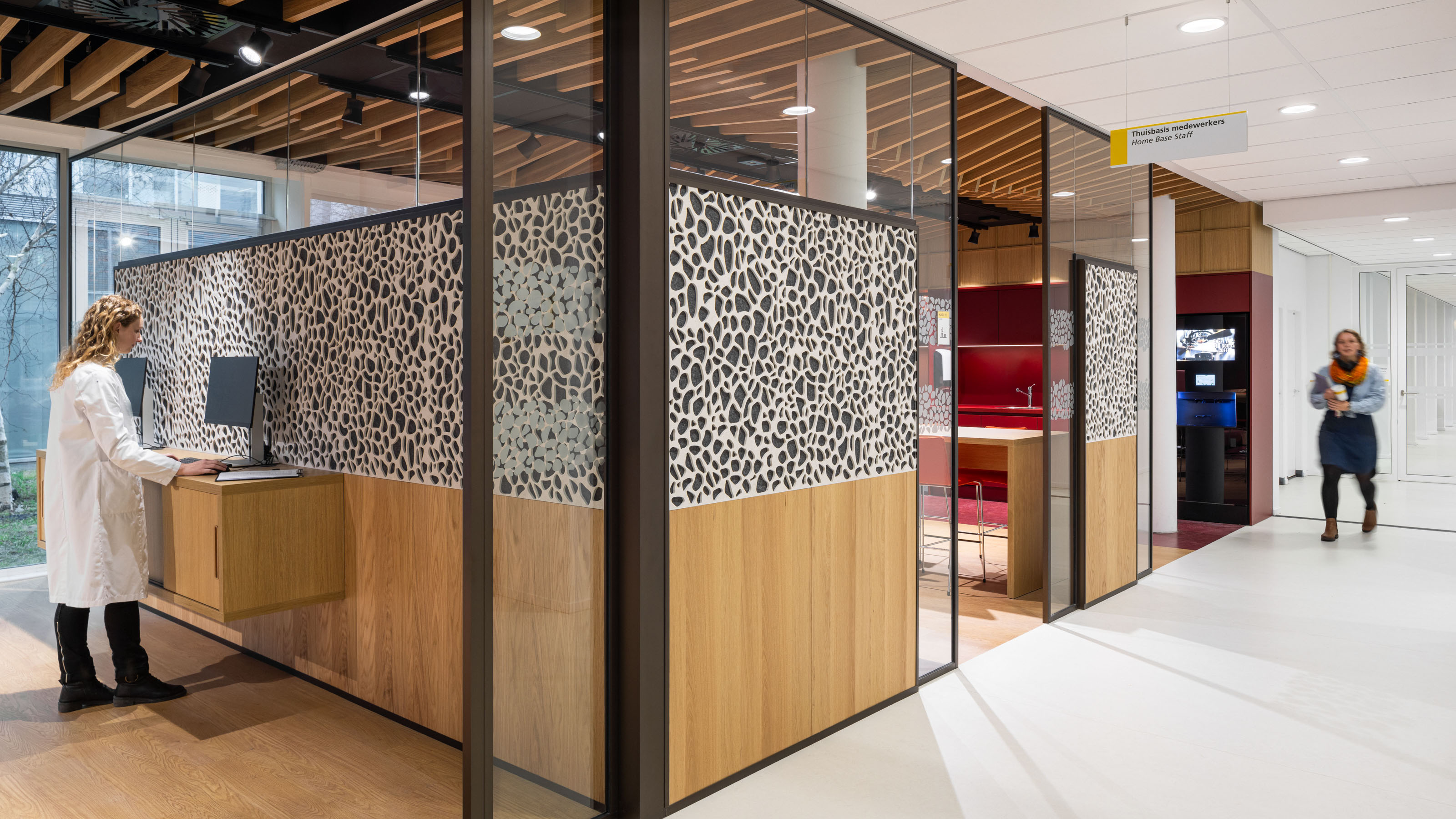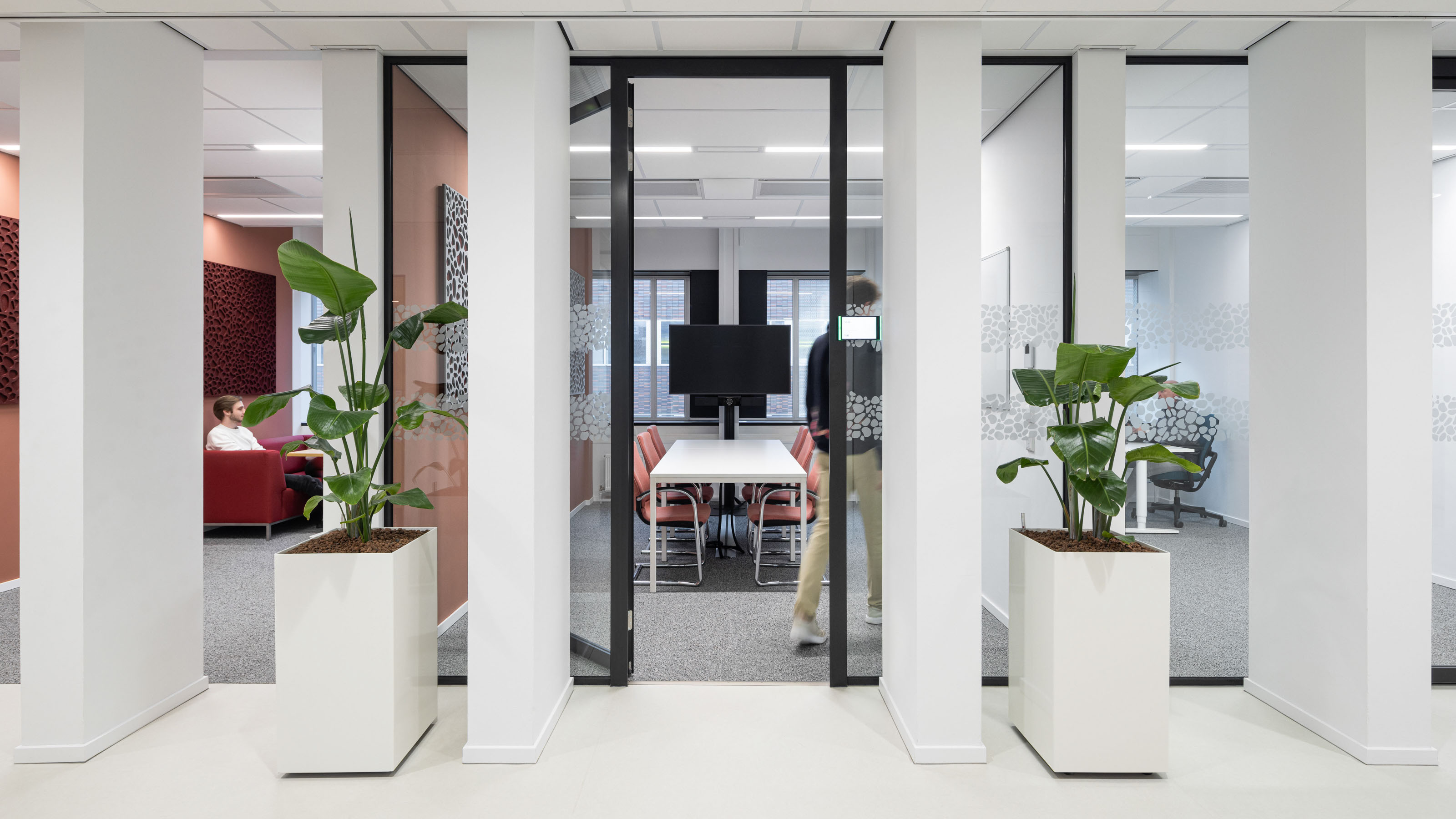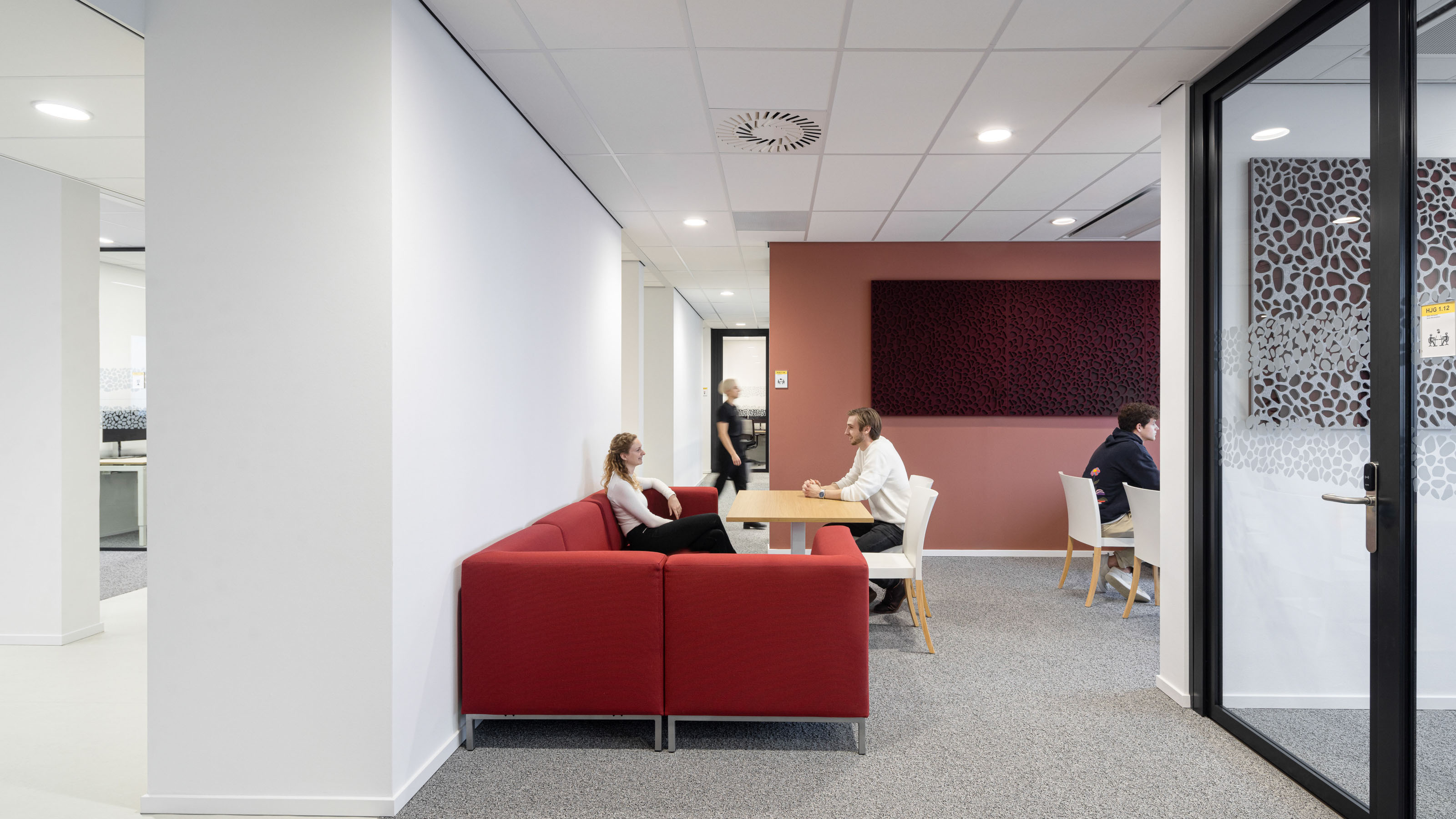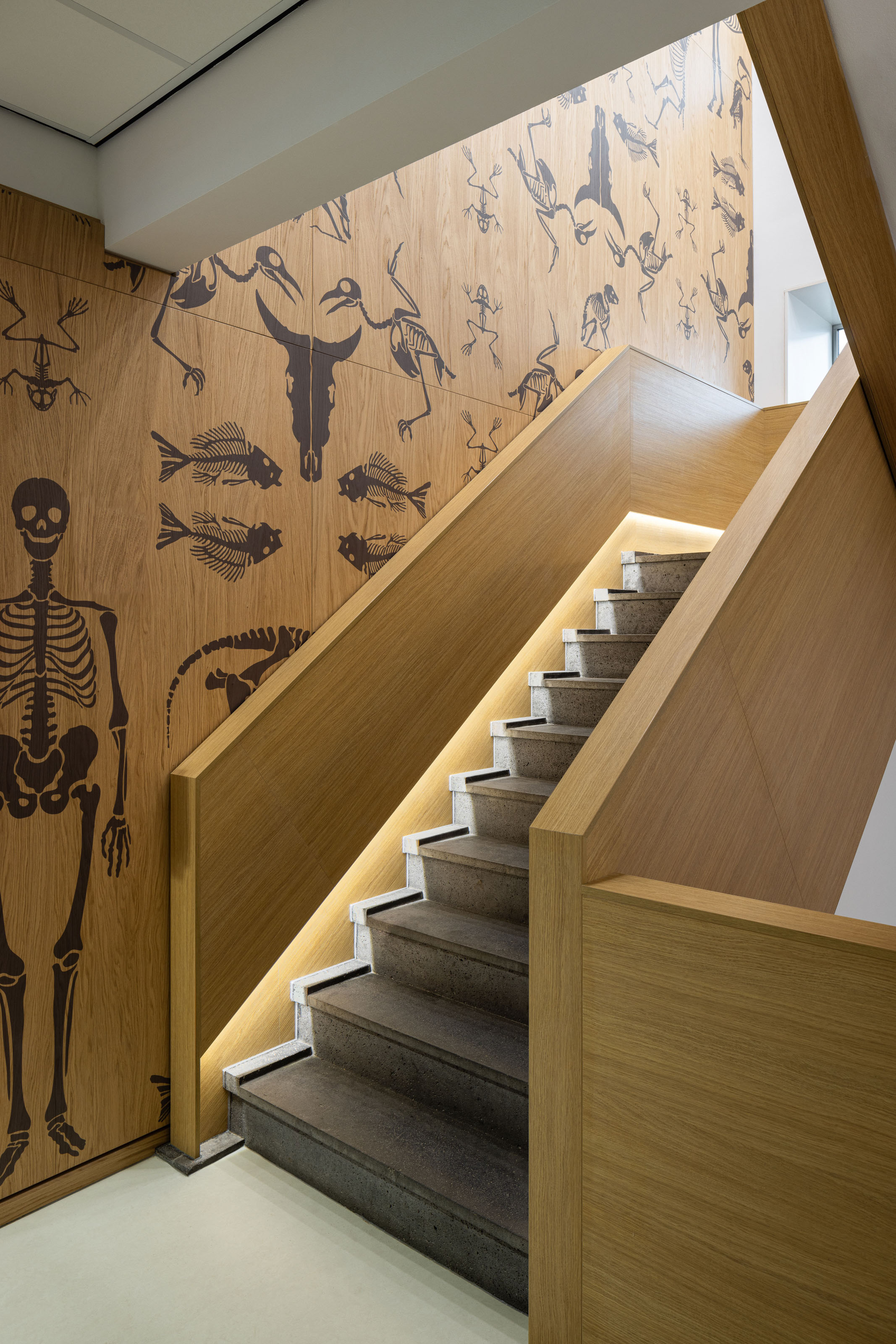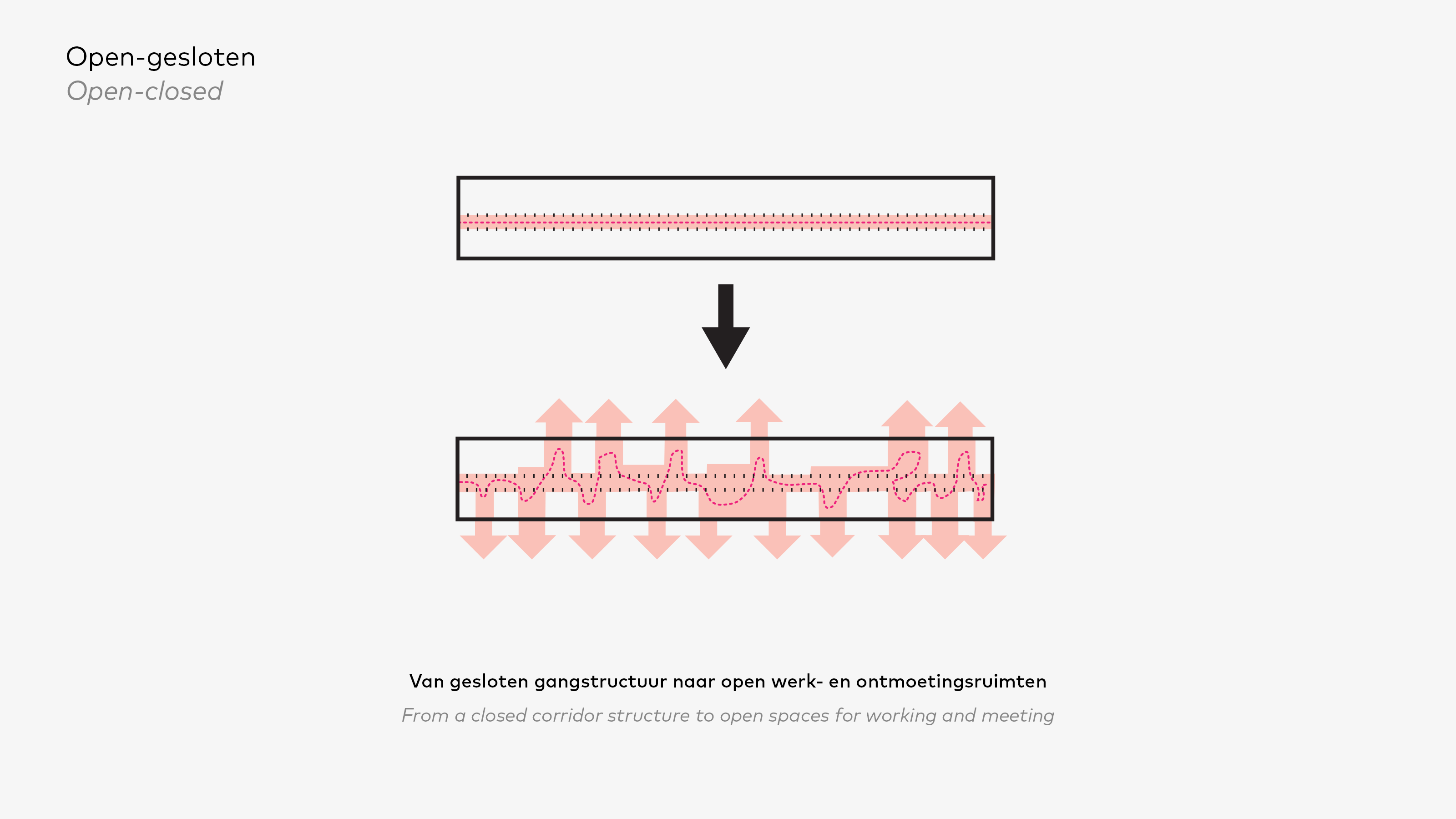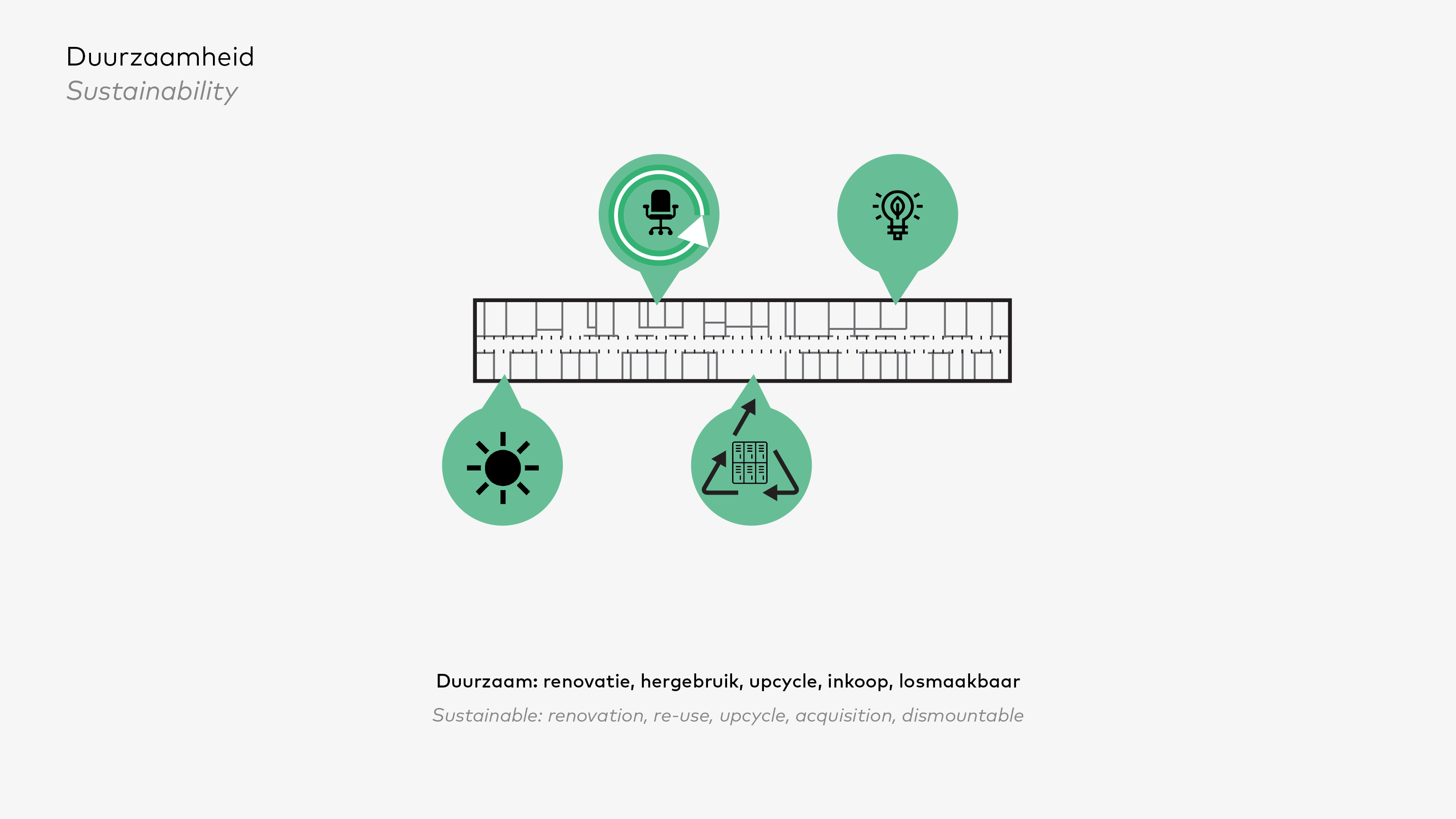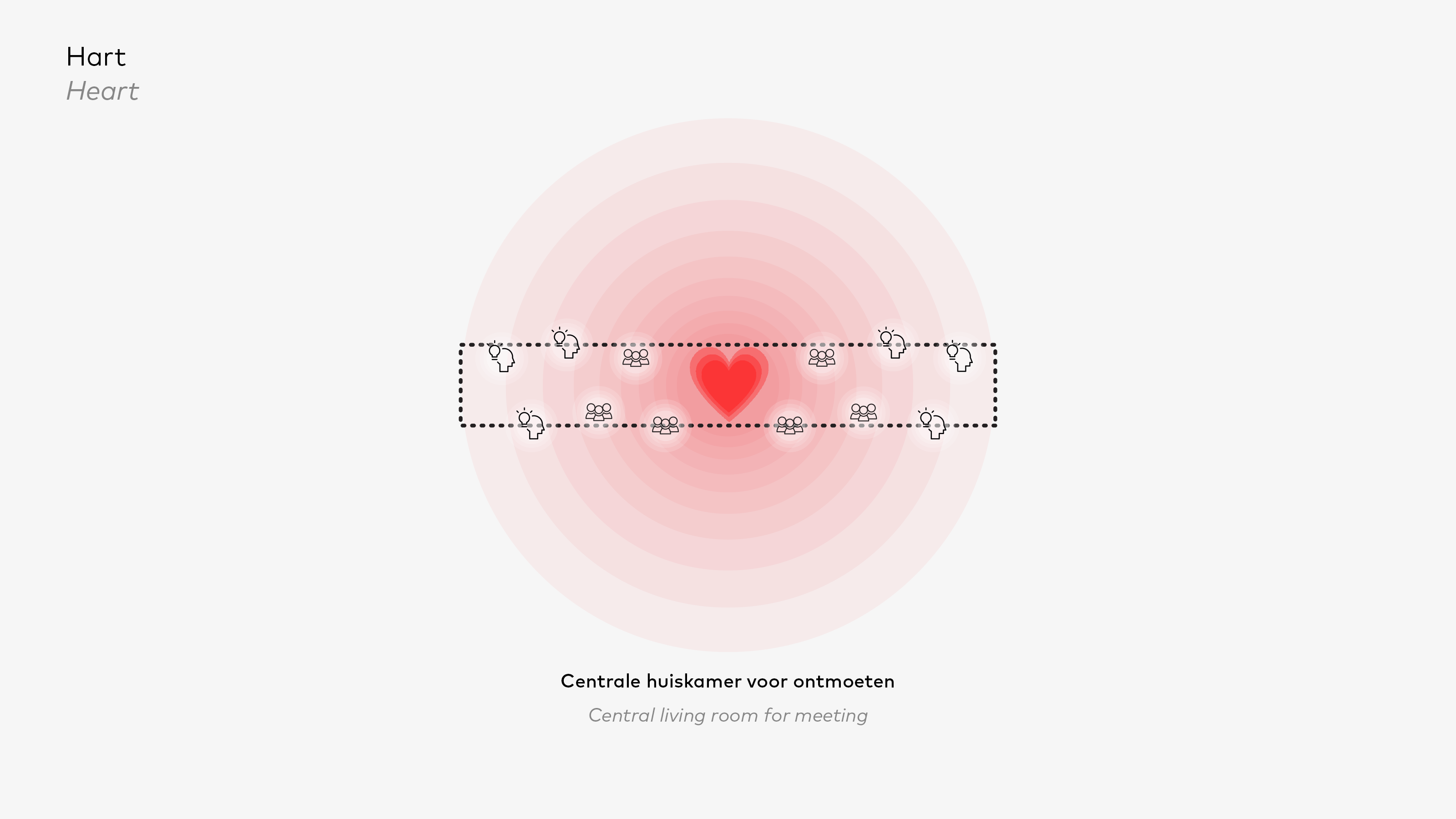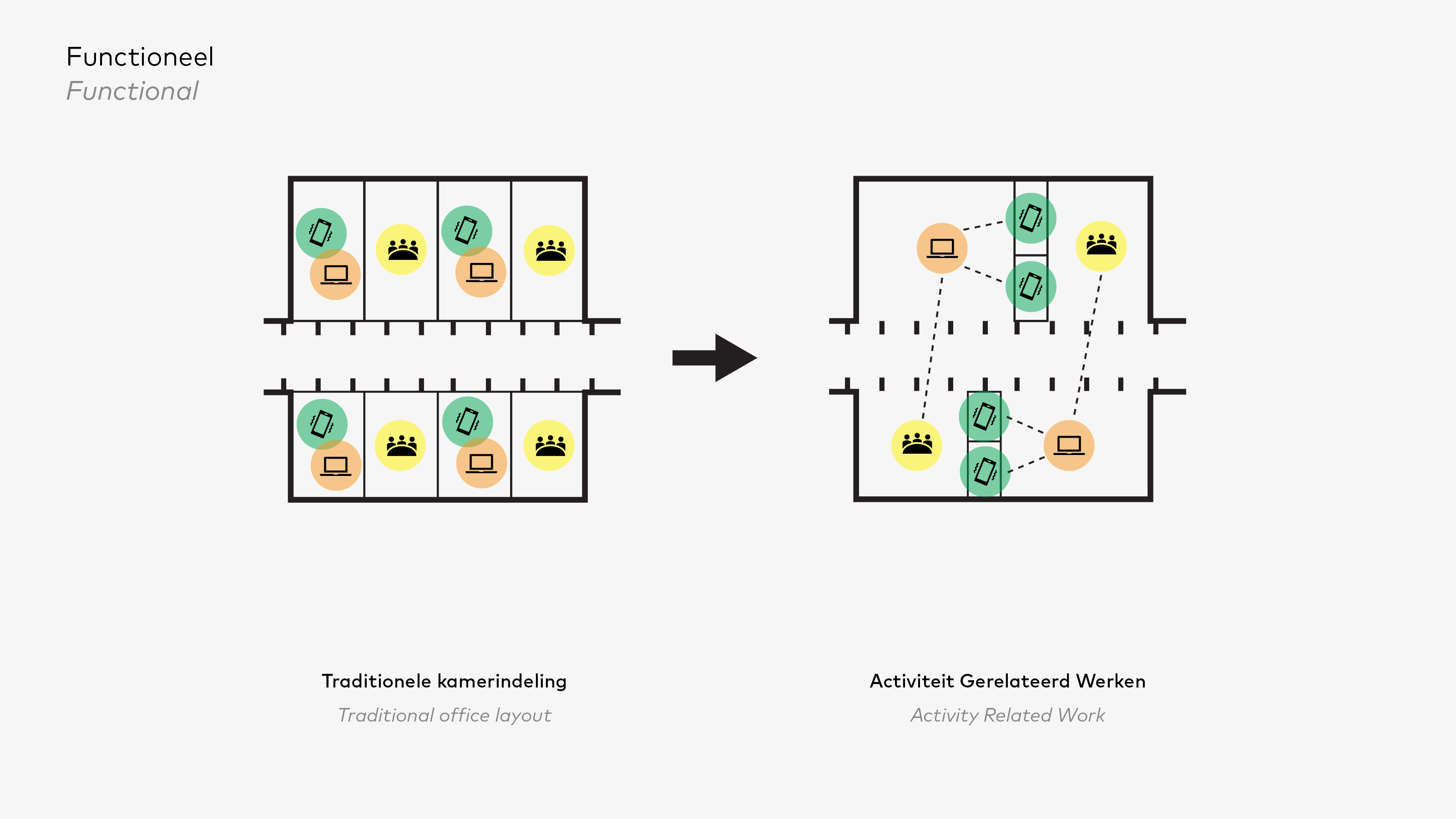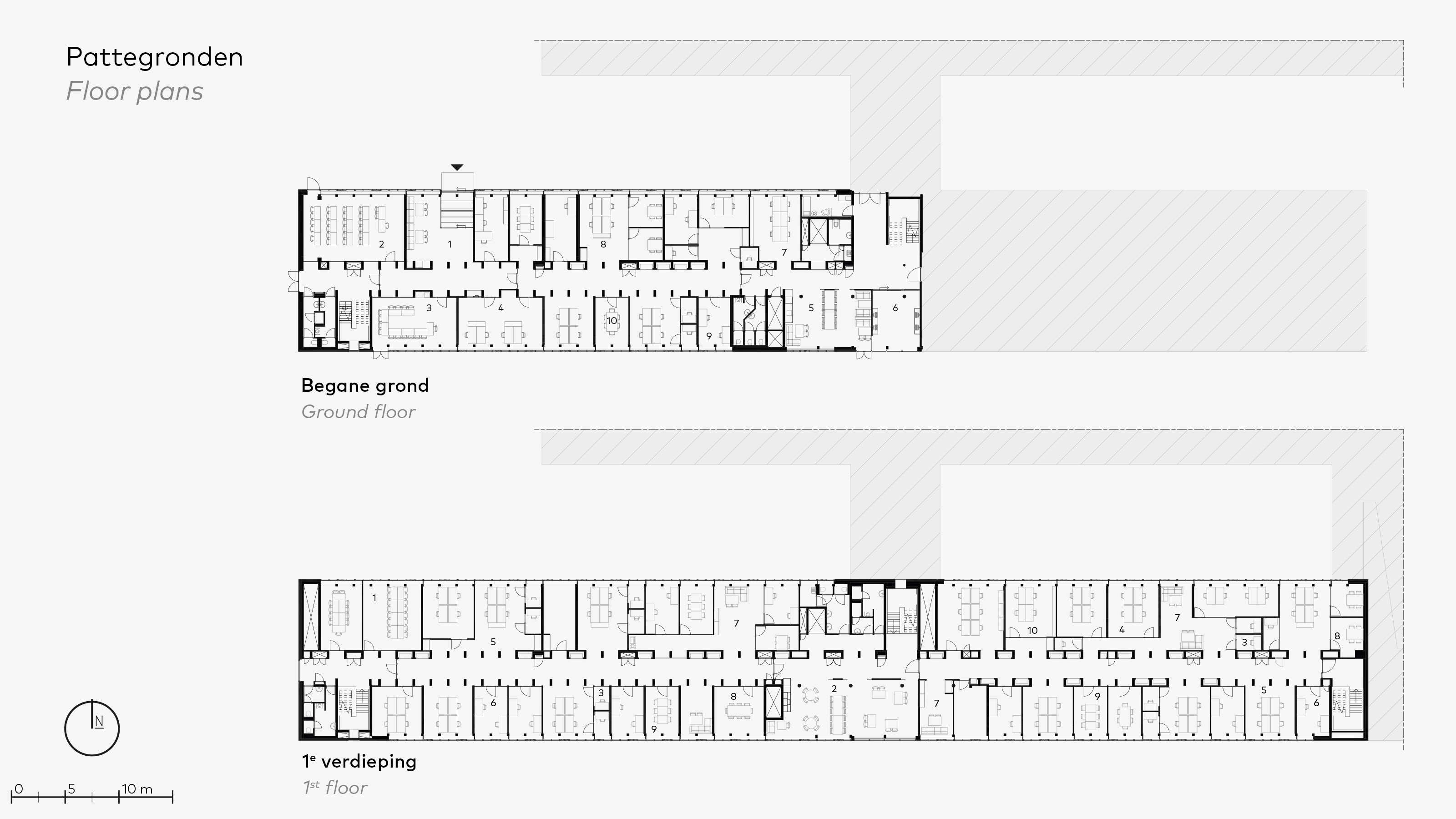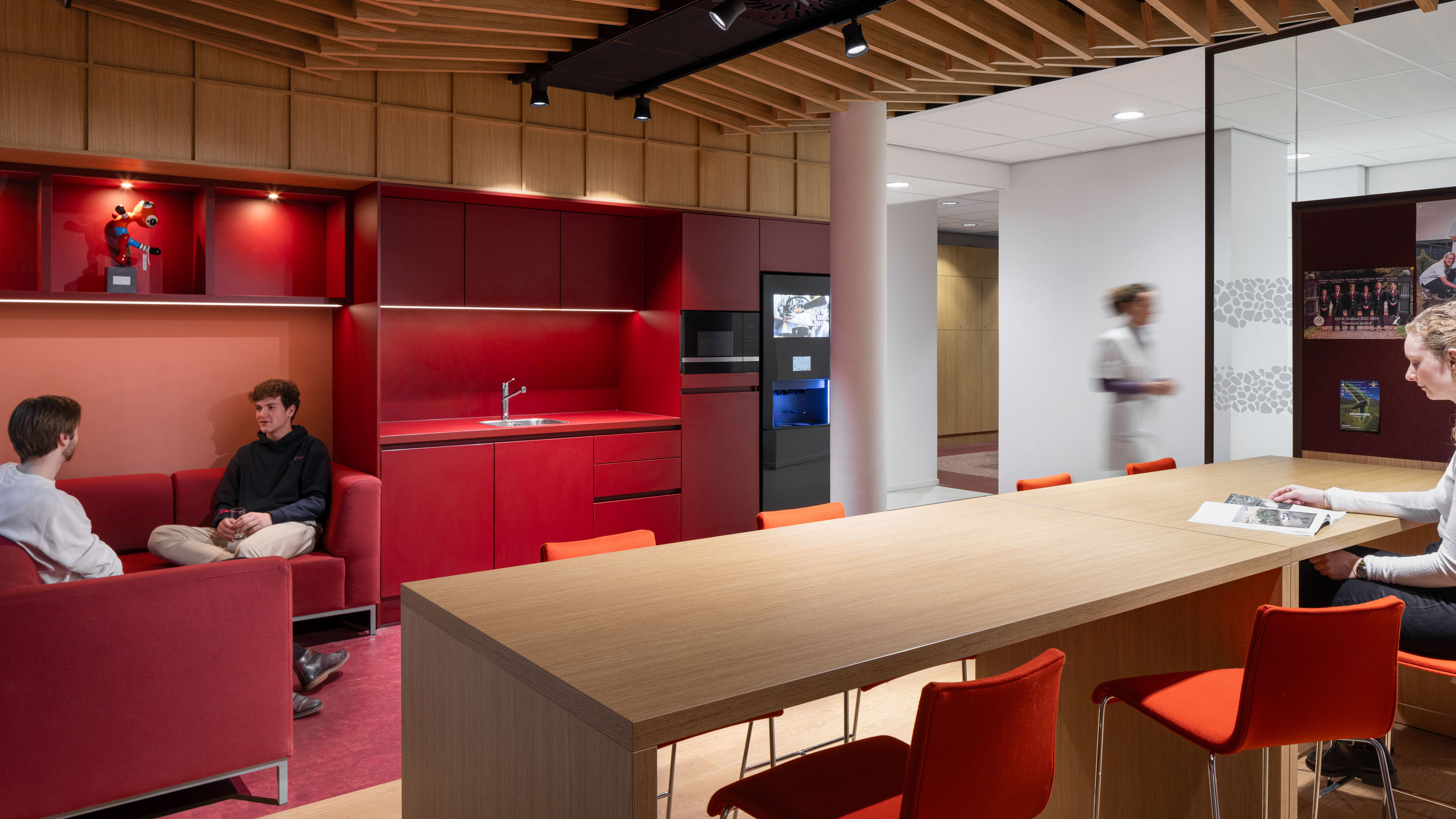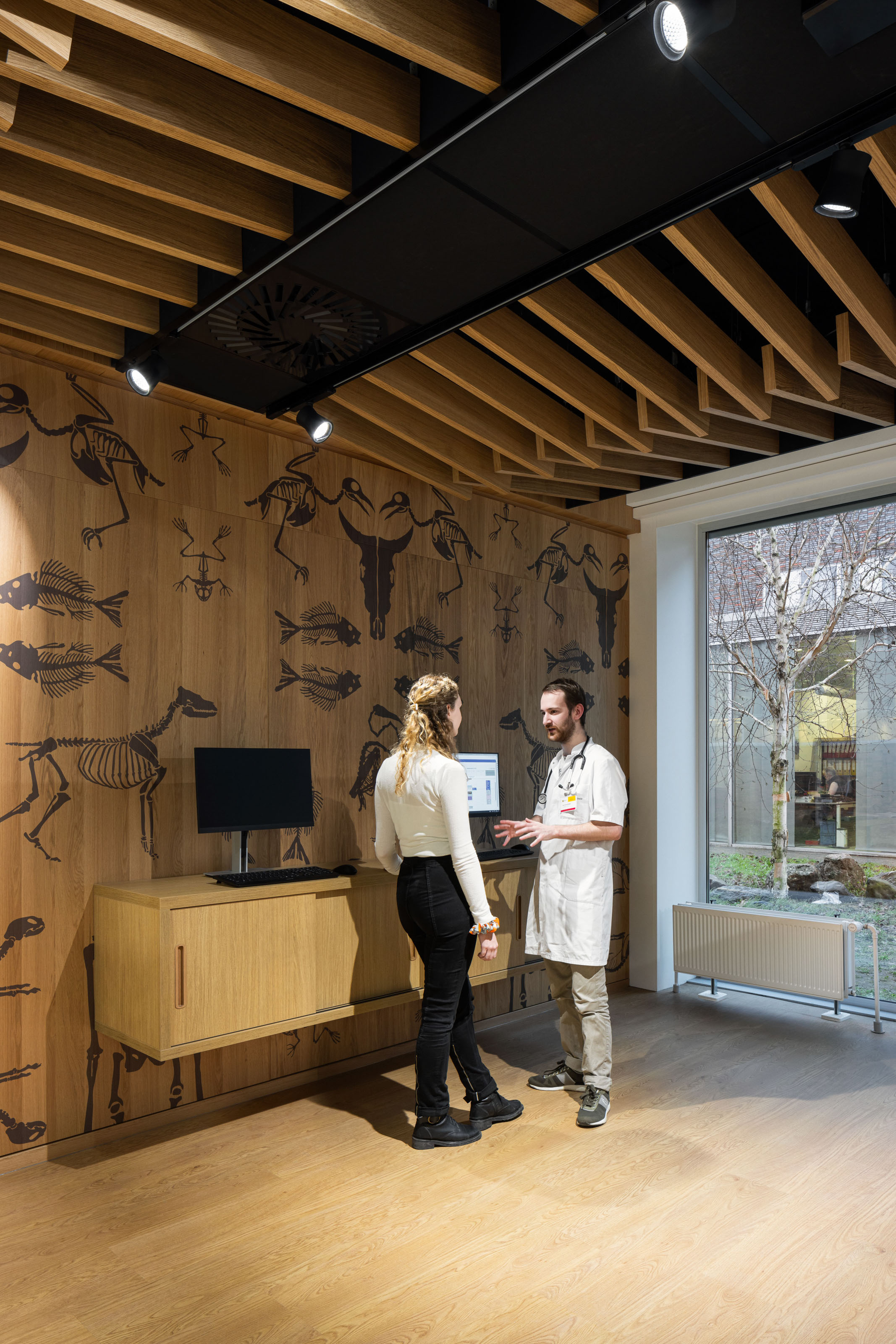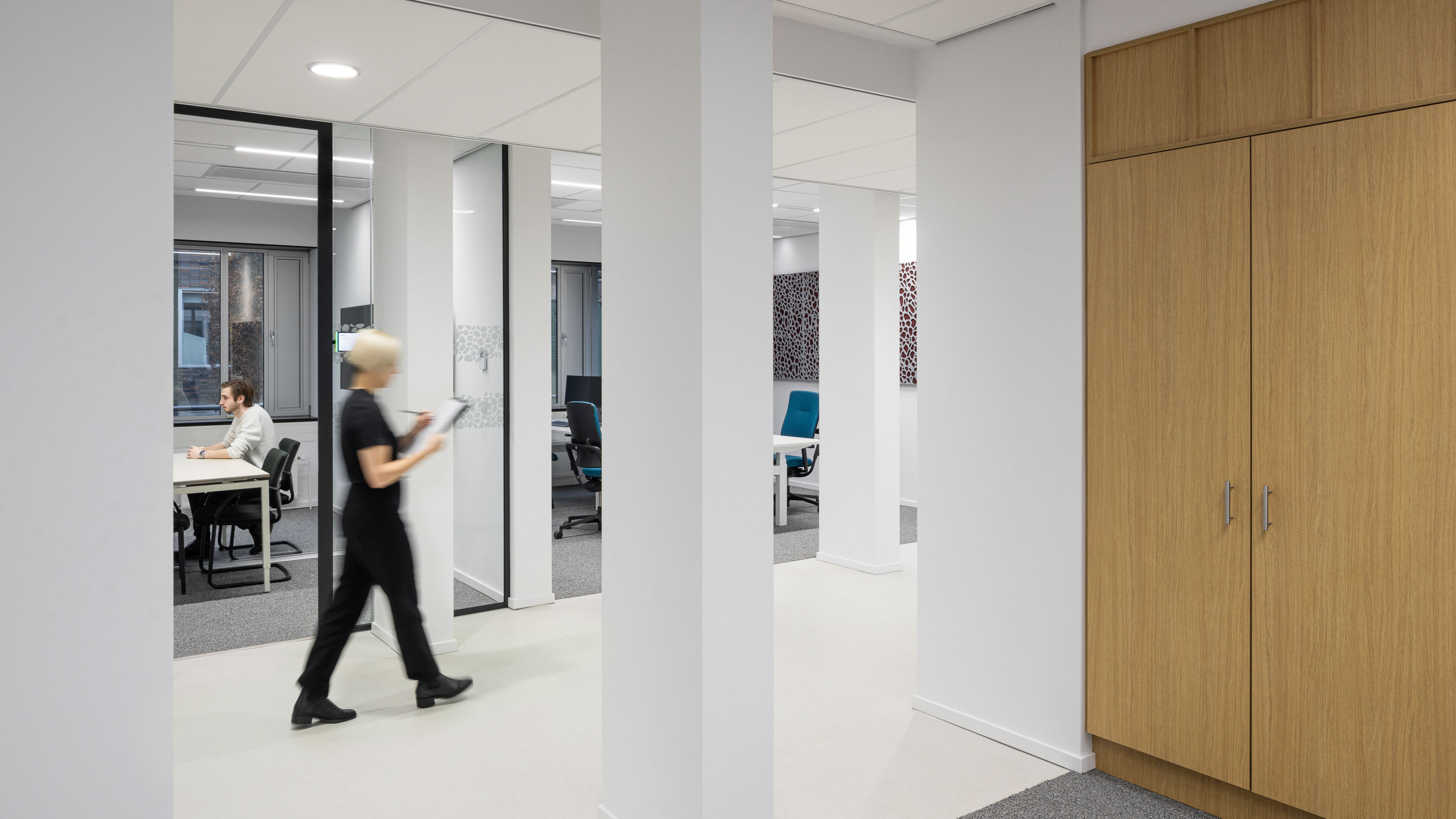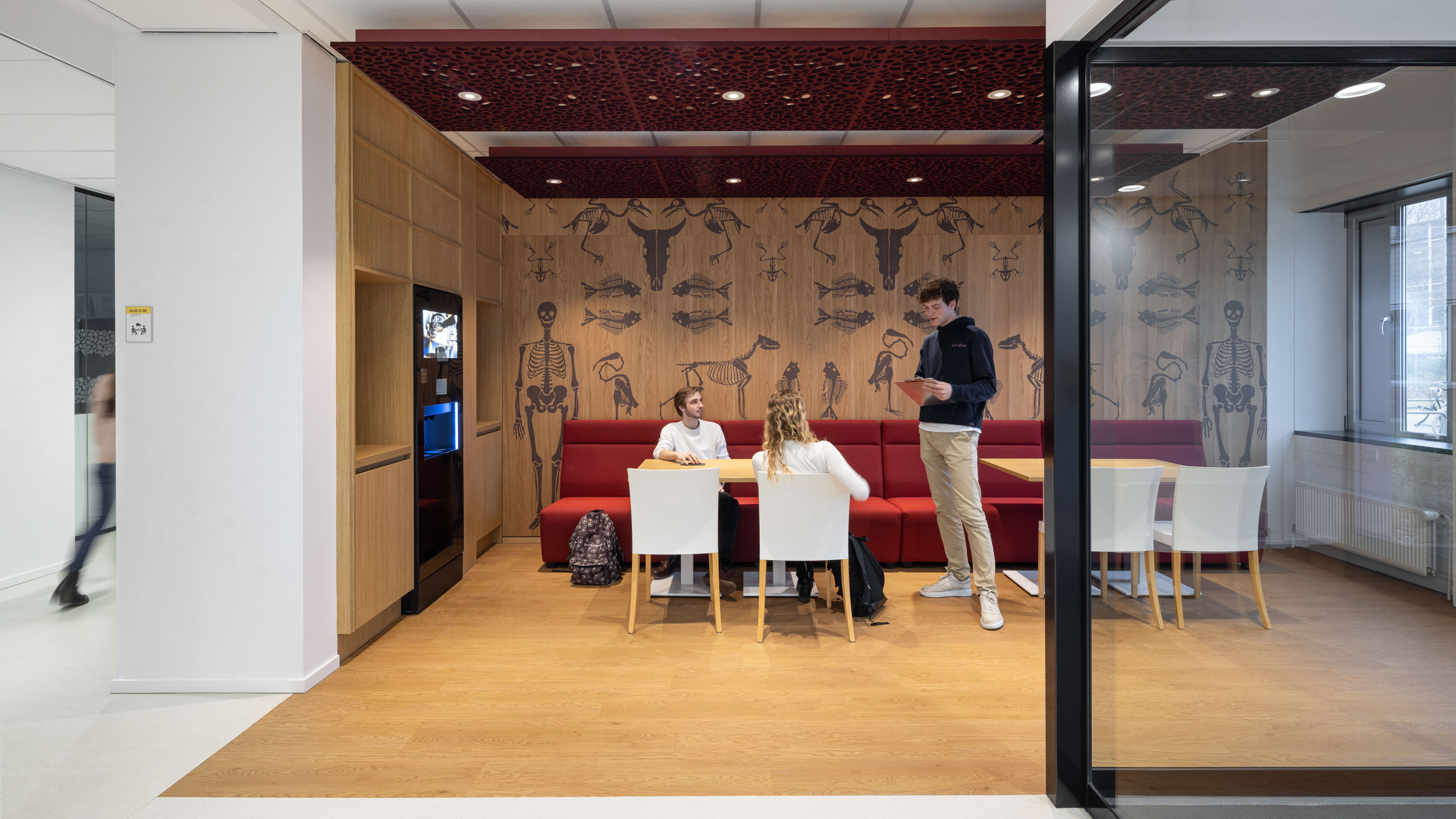Learning, researching and working in a pleasant and healthy building
Renovation according to the 10 R’s of Circular Building
The renovation of the Faculty of Veterinary Medicine at Utrecht University, where interdisciplinary medical and scientific research is conducted within the framework of life sciences, is an example of sustainable design. From the very first discussion, reuse and limiting the environmental impact were part of the design, without affecting the ambition to realise a modern, fresh faculty building. Students, researchers and veterinarians now occupy a pleasant building that offers a truly healthy working and learning environment.
Pioneering in circular renovation
Two faculty buildings from the 1960s on the campus no longer met current requirements. The educational and office environment, where researchers, veterinarians, students and staff work 24/7, urgently required a thorough overhaul. In close cooperation with the users, an integral design approach was developed according to the 10 R’s of circular building, with particular attention for reducing, reusing and renewing.
Sustainability as guideline
An ambition shared by the university and EGM architects was to minimise the use of new materials and waste flows. That is why extensive research was first conducted to determine the ‘harvestable’ components of the building: what can be used directly or in an altered form? Hundreds of running metres of used bookshelves found a new life as lockers; glass walls and furniture were repositioned with smart modifications; and new materials were explicitly bio-based, reusable and demountable. All modifications were documented in the BIM model with a materials passport, making future reuse a good deal easier.
In addition, individual pieces of furniture are bio-based, reused or refurbished. Most new pieces of furniture are second life. Detachability is the new standard, so the interior is completely demountable. In line with the ‘Layers of Brand’ principle, all modifications that have been made, to partition walls and installations for example, can be reversed again with minimum impact and effort. Where possible, components are connected to one another only if they have the same expected life span so that, when the time comes, they can be replaced together. The materials and products applied have a low environmental impact, low emissions and a long life span, and are of high quality in terms of fabrication, assembly and installation, and during use. On the whole, this yields major advantages in the total cost of ownership as well as in daily use.
Sustainable also means healthy – for the students, doctors and researchers who use the faculty with pleasure every day. Beautiful, recyclable and reusable natural materials with references to flora and fauna are employed for the benefit of all occupants. In combination with plenty of daylight and views, both of which we lacking in the original building, people experience a pleasant environment. They function better and feel more alive. Less absenteeism, more work pleasure!
Designing for and with users
The renovation of the Faculty of Veterinary Medicine is characterised by intensive collaboration with future users. By means of a layered consultation model with doctors, researchers and students, the design team and project team could develop a widely supported design in a short space of time. This also accelerated the development of related projects in the area of paperless working, hybrid online work and collaboration.
The design was gradually refined with users on the basis of a university-wide programme of requirements. In workshops with them, the design was elaborated from a schematic plan and circulation diagram to a spatial layout organisation and identity. Lots of attention was devoted to the level of openness in the work environment, the clustering of consultation rooms and concentration spaces, and acoustics. All with the aim of creating calm environments that also enhance the visibility of employees.
The result is an office environment with differentiation in spatial experiences: from buzzing in the central meeting areas, called ‘living rooms’, to calming in the work areas at the rear, with meeting rooms and workshop spaces in between. This arrangement aligns perfectly with the working requirements of various users.
Inspiring working environment
The new work environment optimises performance. Intensive working and relaxing (together or alone) go hand in hand here, in an environment where close attention has been paid to the love that everybody here feels for animals. Priceless relics have found the perfect place in specially designed display cases, wall prints and custom-made acoustically absorbent components everywhere are adopted with references to nature. Animal forms and patterns create a unique atmosphere and an identify all of its own.
With the help of parametric design, ceilings have been designed with organic dimensions. That yields a work environment suited to every user and every form of collaboration, from quiet to noisy. Activity-related work is facilitated through extensive variety in the size and function of workspaces, and a great diversity of consultation forms and working procedures. Students, researchers, doctors and employees feel at ease here. It is as comfortable as a home. The new faculty stimulates collaboration, and the thematic atmosphere that reflects the love for the profession provides inspiration.

